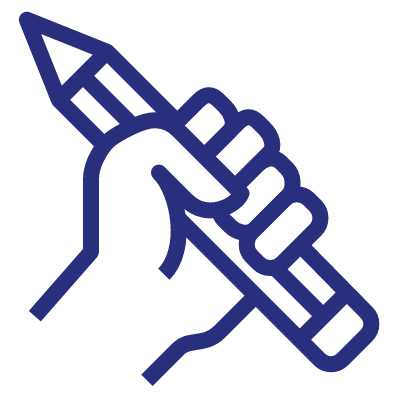MECHANISMS AND MACHINES: KINEMATICS, DYNAMICS, AND SYNTHESIS has been designed to serve as a core textbook for the mechanisms and machines course, targeting junior level mechanical engineering students. The book is written with the aim of providing a complete, yet concise, text that can be covered in a single-semester course. The primary goal of the text is to introduce students to the synthesis and analysis of planar mechanisms and machines, using a method well suited to computer programming, known as the Vector Loop Method. Author Michael Stanisic’s approach of teaching synthesis first, and then going into analysis, will enable students to actually grasp the mathematics behind mechanism design. The book uses the vector loop method and kinematic coefficients throughout the text, and exhibits a seamless continuity in presentation that is a rare find in engineering texts. The multitude of examples in the book cover a large variety of problems and delineate an excellent problem solving methodology.
- A large number of automotive-based examples are included in the text -- these examples are a highly engaging feature for students.
- This is the only text that consistently uses the Vector Loop method throughout the text.
- Subject matter presented entirely in terms of kinematic coefficients, including geartrains, mechanical advantage, limit positions and dead positions.
- Final two chapters deal with mechanism synthesis and stand apart from the first seven chapters which focus entirely on analysis.
- Includes Mindtap which is an interactive, customizable and complete learning solution. It includes a MindTap Reader and a library of learning apps (e.g., CNOW, Aplia, ReadSpeaker, Merriam-Webster dictionary, MyContent, RSS Feed, Kaltura, Progress app, etc.).
Preface.
Acknowledgments.
1. Introduction.
Joints. Skeleton Diagrams. Examples of Skeleton Diagrams. Mechanisms and Machines. Gruebler’s Criterion and Degrees of Freedom. Mobility. Grashof’s Criterion. Exercises.
PART I: VECTOR LOOP METHOD.
2. Kinematic Analysis.
Closed-Form Solutions the Position Equations. Numerical Solutions to Position Equations via Newton’s Method. The Motion of Points of Interest. Exercises. Programming Problems. Appendix I: Derivation of the Double Angle Formulas. Appendix II: Derivation of the Tangent of the Half Angle Formulas. Appendix III: Matlab Code Used in Example 2.10 Demonstrating Newtons’ Method.
PART II: ROLLING CONTACTS.
3. Kinematic Analysis.
Externally Contacting Rolling Bodies. Internally Contacting Rolling Bodies. One Body with a Flat Surface. Assembly Configuration. Geartrains. Exercises. Appendix I: The Involute Tooth Profile.
PART III: KINEMATIC COEFFICIENTS.
4. Kinematic Analysis.
Time-Based Velocity and Acceleration Analysis of the Four Bar Mechanism. Kinematic Coefficients. Finding Dead Positions Using Kinematic Coefficients. Finding Limit Positions Using Kinematic Coefficients. Kinematic Coefficients of Points of Interest. Kinematic Coefficients of Geartrains. Exercises. Programming Problems.
PART I: THE INVERSE DYNAMICS PROBLEM.
5. Machine Dynamics.
Review of Planar Kinetics. Three-Dimensional Aspects in the Force Analysis of Planar Machines. Static Force Analysis and Inertia Force Analysis. Force Analysis of Rolling Contacts. Exercises. Appendix I: Kinematic Analysis for Examples in Section 5.1 (Example 5.2) and Section. Appendix II: Computing the accelerations of the mass centers of the composite shapes in the example of Section 5.2.6.1.
PART II: JOINT FRICTION.
6. Machine Dynamics.
Friction in a Pin Joint. Friction in a Pin in a Slot Joint. Friction in a Straight Sliding Joint. Exercises.
PART III: THE POWER EQUATION.
7. Machine Dynamics.
Development of the Power Equation. Power Equation and the Inverse Dynamics Problem. Power Equation and the Forward Dynamics Problem. Mechanical Advantage. Efficiency and Mechanical Advantage. Exercises. Programming Problems. Programming Problems - Designing the Drive System of an Air Compressor. Designing the Drive System of a Fail-Safe Quick Valve Shut Off System. Design Problems.
PART I: FREUDENSTEIN’S EQUATION.
8. Mechanism Synthesis.
Freudenstein’s Equation for the Four Bar Mechanism. Freudenstein’s Equation for the Crank-Slider Mechanism. Design Problems.
PART II: RIGID BODY GUIDANCE.
9. Mechanism Synthesis.
Mathematical Model of a Planar Rigid Body Displacement. The Three-Position Problem. The Four-Position and Five-Position Problems. Design Problems.
Michael M. Stanisic
Michael M. Stanisic earned the B.S.M.E., M.S.M.E. and Ph.D. degrees from Purdue University. Since 1988, he has been teaching and researching machine and manipulator design at the University of Notre Dame. He holds several patents on dextrous and singularity-free manipulator designs, which were developed with support from the National Science Foundation. He has published a number of papers concerning the application of Curvature Theory to the synthesis of mechanisms and to the control of robotic manipulators. In collaboration with the J. Stefan Institute, he has developed new types of humanoid shoulder mechanisms that include effects of human scapular motion. He has served several terms on the Mechanisms Committee of the American Society of Mechanical Engineers and has been a member of the International Scientific Committee for Advances in Robot Kinematics since 1988. At the University of Notre Dame, he has received numerous teaching awards at the departmental, college and university-wide levels.



















